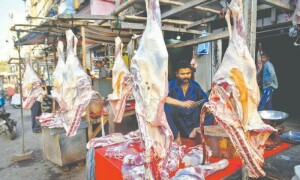WHILE owning a house or apartment in this country is a significant challenge faced by people belonging to all levels of economic power, the property sector is also amongst the most booming of businesses.
Unfortunately, though, perhaps as a result of this polarised reality, the term ‘safe as houses’ cannot be said to apply here.
Across the country, over the years, there have been cases where people have sunk funds into a piece of property, only to find out later that the scheme that looked so glamorous in advertisements has few chances of ever materialising, or may turn out to be fraudulent.
Also read: Victims of fake housing scheme get Rs38m
Given this context, the National Accountability Bureau’s decision on Friday to regulate advertisements by fraudulent housing societies is a step in the right direction.
During a meeting in Islamabad attended by the NAB Rawalpindi director-general as well as representatives of other relevant organisations including the heads of Pemra, the Rawalpindi Development Authority and the Capital Development Authority, it was agreed that the credentials of housing societies would be verified before an advertisement was published/broadcast, and that advertisements would not be carried unless the relevant scheme had fulfilled all formalities.
While the media must certainly shoulder their burden, ending the matter here is not going far enough.
Pressure needs to be put on regulatory civic bodies across the country to become much more proactive about their responsibility. But even beyond that, there is a great deal of work to be done.
Zoning and land-acquisition/development are murky areas and the regulations differ from city to city, in addition to the distinction between rural/agricultural and urban land.
Consider, for example, that as cities expand, as new housing schemes are thought up, the land involved is often defined on paper as agricultural, which means that the urban regulatory body might not have jurisdiction.
In short, there is a need to kick-start a process that rationalises land development, and creates formal and cohesive processes at several tiers of governance, and that is uniform at least across each province.
Published in Dawn, November 17th, 2014











































